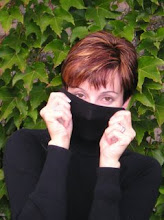For Christmas Eve
 Silent Night
Silent Nightperformed by The Elora Festival Singers
The Story of Silent Night, "The Song from Heaven"
as told by Lisa Granfield
Father Josef Mohr was born in 1792. He sang sacred music as a boy, became a priest, and was appointed to the Church of St. Nicola in Oberndorf, Austria.
Franz Xaver Bruger, born in 1787, studied to become a teacher and, in 1807, became the schoolmaster and organist in Arnsdorf, a village near Oberndorf. Father Mohr and Gruber became friends when the teacher traveled to play the organ at St. Nicola.
On the day before Christmas, 1818, the church organ was broken. Perhaps the constant damp from the nearby Salzach River had rusted parts of the instrument.
A more entertaining explanation involves hungry mice. Driven inside by the fierce wither cold, the tiny animals found the organ's leather bellows very tasty. Consequently, the mice chewed a hole that crippled the instrument.
Since unaccompanied singing was unpopular in those days, Father Mohr asked Gruber to compose music for the verses he'd written for that day. Within a few hours, Gruber matched notes to the words of the new song for voice and guitar that eventually became known as "Silent Night".
After the holiday, Karl Mauracher was called to repair the organ. It is believed that he took the new song home with him and shared it with musicians and singers he met. "Stille Nacht", however, became a forgotten title. The song was called "The Song From Heaven" and was said to be of "unknown origin".
During the mid-1800's, groups of strolling, family singers performed in the streets and often gave concerts. The talented Strasser family were such a group of entertainers. The four Strasser children performed "The Song From Heaven" whenever their glove-maker parents traveled to fairs to sell their goods. By 1832, the Strassers had taken the song to Leipzig and introduced it to German audiences.
In 1839, another singing family, the Rainers, took the song to the United States and performed it for delighted audiences. "The Song From Heaven" was soon included in prayer books and hymnals.
As the song's popularity grew, Father Mohr and Gruber were all but forgotten. Some people believed that "The Song From Heaven" had been written by Mozart, Beethoven, or Franz Joseph Haydn's brother, Johann Michael. Others thought it was a Tyrolean folk song.
In 1854, musical authorities in Berlin sent to Salzburg and asked if the Haydn manuscript was in St. Peter's Church. As it happened, Felix Gruber, Franz's youngest son, was a choirboy at the church. He told his father about the request.
Gruber had left St. Nicola in 1829 and was living near Salzburg in Hallein. He attempted to settle the debate by writing a document entitled "The Authentic Occasion for the Writing of the Christmas Song 'Silent Night, Holy Night'".
Thirty-six years after "Stille Nacht" was first performed in a cold village church, its worldwide audience finally learned the identities of its humble and gifted creators.
Father Mohr left St. Nicola in 1819. He died and was buried in Wagrain in December, 1848. His friend Gruber lived until 1863.
One of the most moving stories about the song took place during the horrors of World War I. On Christmas Eve, 1914, in the dark European trenches, the freezing men awaited the next attack by the enemy soldiers across no man's land. But there was no shooting. Only silence. Afraid to peer over the top of the trench, the British soldiers quietly sat and listened to the rising sound of men's voices singing.
When they dared to look across the battle-scarred terrain, the British saw the gleam of tiny lights, as the Germans lit candles on small Christmas trees in their trenches. "Stille Nacht" filled the air as the German soldiers observed the holy eve of peace.
In a desolate landscape far from home, the soldiers of both sides called a truce. They embraced, shared cigars, chocolate and sausages. On Christmas Day, they played soccer on the battlefield.
The unofficial truce lasted for days but, eventually, the men returned to the business at hand-- war-- for nearly four more years.
After World War I, the popularity of "Silent Night" continued to grow. In the 1920's and 30's, radio listeners heard the song performed by many singers, including Franz Gruber's own grandson who played it on Father Mohr's guitar.
Famous contralto, Madame Ernestine Schumann-Heink, sang "Stille Nacht" each Christmas Eve on the radio in what became a holiday tradition for families around the world. "Mother" Schumann-Heink also recorded it for play on phonographs. Translations enabled people everywhere to share the song.
The deteriorating original Church of St. Nicola was torn down around 1900. The small Stille Nacht Kapelle (Silent Night Chapel) was built in Oberndorf to commemorate Father Josef Mohr and Franz Xaver Gruber and, every Christmas Eve, a special service is held outside the chapel.
Whether it is heard in a show-covered Alpine village or under a blazing African sky, "Silent Night" invites us to reflect on the meaning of Christmas and to "sleep in heavenly peace".

This marvellous excerpt is from the children's book, "Silent Night: The Song from Heaven". It was written by Linda Granfield, and the illustrations are by Nelly and Ernest Hofer. I cannot recommend this wonderful book highly enough-- it should be a part of every child's Christmas book collection.




























No comments:
Post a Comment